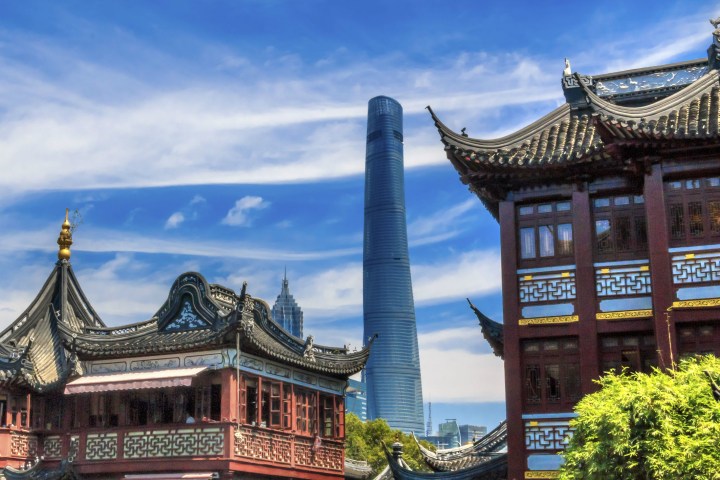
When it was completed in 2015, the Shanghai Tower garnered the impressive if somewhat lackluster title of “World’s Second Tallest Building,” being outdone by the Burj Khalifa in Dubai by nearly 700 feet. However, could the Shanghai Tower at least hold first place for the speed of its state-of-the-art elevator? Engineers believe so.
Thousands of people travel up and down the Shanghai Tower on a daily basis. With such a massive number of humans bustling in and out, speed is the name of the game. As buildings worldwide continue to outdo one another — in terms of height — the need for more efficient elevators is greater than ever. The engineers at Mitsubishi Electric felt that with the Tower, they were up to the daunting task of creating the crown jewel in elevator tech.
The previous record holder was the CTF Finance Center in Guangzhou. That elevator — created by Hitachi — is capable of lifting passengers at the breakneck speed of 65 feet per second. The elevator has the capacity to zoom from the bottom floor to the 95th floor in an unbelievable 45 seconds.
The elevator in the Shanghai Tower can lift passengers at a speed of nearly 46 miles per hour, or more than 67 feet per second. Mitsubishi Electric claims the elevator can travel from the second level basement to the 119th floor in 53 seconds. No word was offered on what state the passengers would be in when they arrived there.
This wasn’t just a feeding frenzy to create the world’s fastest elevator. Mitsubishi also incorporated an array of performance features into their record-breaking product. There are vast improvements to safety features, like buffer and braking upgrades as well as a speed governor. It should also be noted that the elevator has the capacity to switch between various speed settings as well. Depending on the levels of traffic at any given time, the elevator can travel between 40 and 46 miles per hour.
It may seem like the ability to lift a big box upward, more quickly than others would be rather simple, and it is. However, when you’re talking about traveling at near-highway speeds and stopping rather suddenly, it is important to consider the comfort level of passengers onboard. Not to mention the basic limitations and structural integrity of the cables. Is this as good as it gets, or have the elevator wars only begun?
Some engineers believe the Shanghai Tower elevator can and will be topped, however, the apex in performance is on the horizon. Albert So, an elevator engineering expert, recently reiterated this sentiment in an interview with CNN:
“I predict the maximum speed of a vertical lift cabin cannot be more than 79 feet per second,” noted So. “This is not because we can’t make lifts that go faster than this, but because of the air pressure.”
That sure sounds like a challenge.


